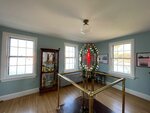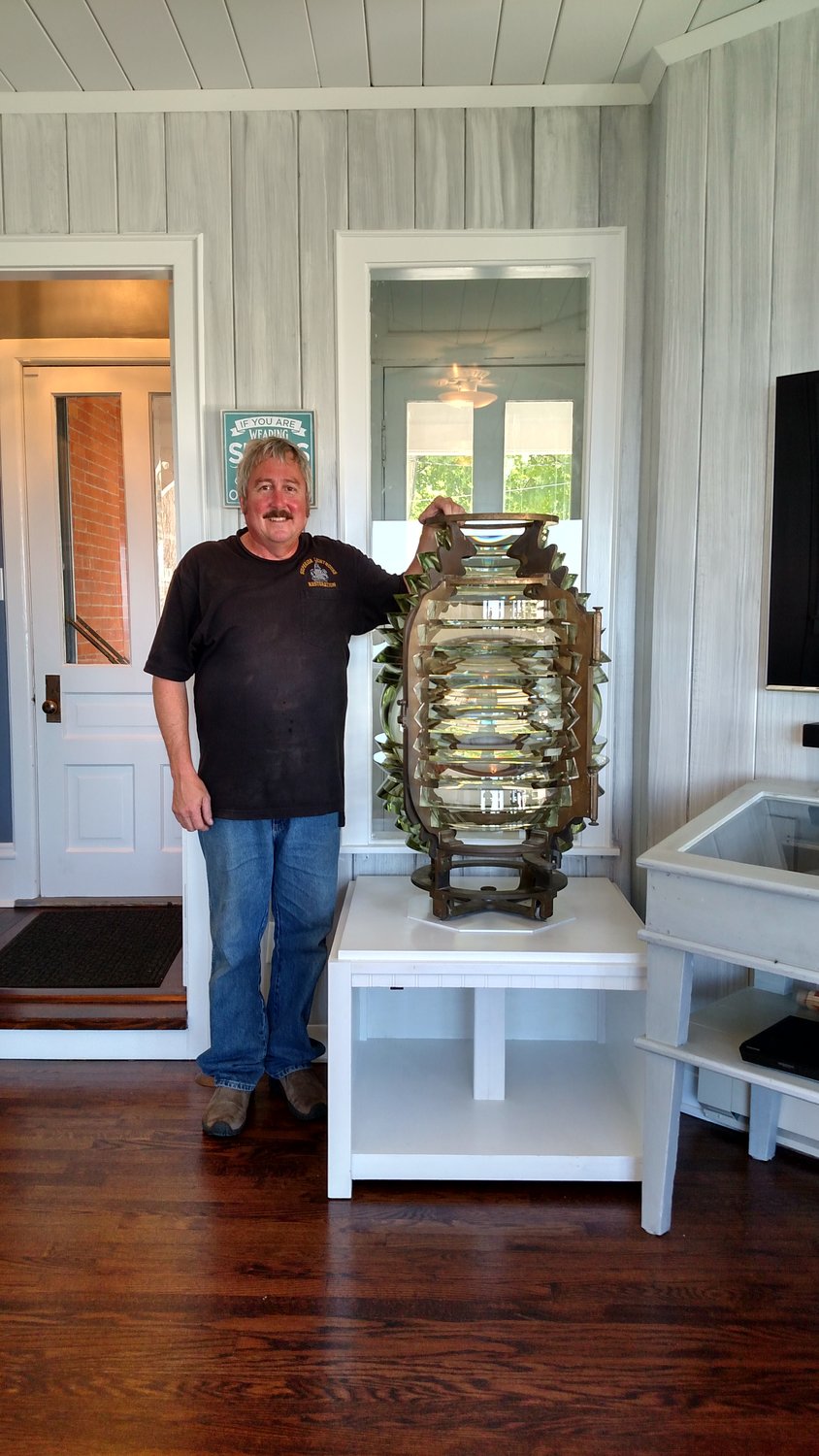Noted Lampist to Return Pomham Rocks Lighthouse’s Iconic Lens
What do an Academy Award nominated film and Pomham Rocks Lighthouse have in common? A lampist. Kurt Fosburg, one of only a handful of Coast Guard certified lampists in the country, created the realistic lighthouse props for the 2019 motion picture, “The Lighthouse.” He will be traveling to Riverside, RI in September to transfer Pomham’s original lighthouse lens home. The fourth order Fresnel lens has been on display at the Newburyport, MA Custom House Maritime Museum for more than four decades. To celebrate the 150th anniversary of Pomham Rocks Lighthouse, a chapter of the American Lighthouse Foundation, it is returning to its island home.
From the Marquette Maritime Museum in Michigan, where he is vice president of the board of directors, Fosburg shared his thoughts about lighthouse lenses in an interview recently with representatives of the Riverside and Newburyport museums. His career began in 1999 when Marquette received a Fresnel lens on loan from the U.S. Coast Guard. The lens arrived with a lampist to assemble it – James Woodward from Cleveland, Ohio. Fosburg assisted him, apprenticed for several years, then worked in business with him for more than a decade.
The Michigan lampist has had a diverse career history. “I’ve never sat behind a desk,” he affirmed. From his Lake Superior home, he ran a fishing charter boat, then a ferry full time. “Ironically,” he noted, “I ran people to a lighthouse and gave a lighthouse tour.” He also worked locally in Warren, RI on Blount’s cruise ships, giving tours. “I’m a mechanical engineer and a jeweler by trade and a kind of jack of all trades,” he explained. He added that the Fresnel lens is “like a really, really big jewelry, in a way.”
Developed by French civil engineer and physicist Augustin-Jean Fresnel in 1822, the lens which bears his name was revolutionary in focusing a lighthouse’s beacon, and in turn, improving the safety of those at sea. The intricate arrangement of prism-shaped pieces of glass in concentric circles, supported by a brass frame, concentrated light by reflecting and refracting, or bending, it into parallel horizontal beams which could be seen over long distances. It was the task of a professional lampist to assemble, clean and repair this fragile optical equipment. In 1871 when Pomham Rocks Lighthouse was built, there were hundreds of active lighthouses lit by Fresnel lenses in the country, and the United States Lighthouse Service employed lampists to care for them. A century and a half later, the number of both has declined sharply.
Since the U.S. Coast Guard replaced the U.S. Lighthouse Service in 1939, the original Fresnel lenses have been replaced with more current technology. Many of the antique lenses were destroyed. Those remaining were stored and later transferred to maritime or lighthouse museums. Fosburg has moved, repaired and conserved more than a hundred Fresnel lenses, ranging from small sixth order ones to the largest, more powerful first order size, throughout the country.
Logistics is what Fosburg describes as the most challenging part of his job. “Moving priceless objects that can be broken” is a great responsibility, he notes, and every move presents its own challenges. He admits that the most terrifying part of this job will be going through Boston. To transport the antique lens, weighing from 150 to 175 pounds, from Newburyport to Riverside, he has built a special wooden crate. “It’s a good, old-fashioned, what I call Egyptian-style,” he explained. The crate will have two holes on each side and rods running through it.
Owner of Superior Lighthouse Restoration, LLC, Fosburg is experienced in caring for these antique lighthouse lenses. Once at Pomham, he will make any necessary repairs, clean and install the classic antique lens for display. He is currently creating a replica of the brass oil lamp that was placed inside the beehive-shaped lens. He is also making a replica of the pedestal on which Pomham’s original sixth order lens was stationed from 1871 to 1926 and a display platform for the lens. The newly created pedestal will be placed in the tower of Pomham Rocks Lighthouse to be used as a stand for the existing LED light. The brass pedestal currently in the tower, which is original to The Lighthouse, will be moved to the first floor Pomham Room in The Lighthouse’s museum, and will hold the returned fourth order Fresnel lens. Assisting Fosburg with the move and installation will be Alex Dias, vice chair of the board of Friends of Pomham Rocks Lighthouse.
Fosburg is a recognized expert in creating replicas of lamps and pedestals. He built the rotating clockworks, lens pedestal and lamp for the Academy Award nominated motion picture, “The Lighthouse,” starring Willem Dafoe and Robert Pattinson. “I was their technical advisor,” he recounts. “The set director was fanatical about accuracy. So, the things you see are actually very, very accurate,” he stated.
What he enjoys most about his job is that he gets to go to unique places. “I get to work on something mechanical, something unique and something historical, all at the exact same time. And I think it fits very well that I can do that because I have knowledge of the item, the artifact, and history’s my thing,” he said. “I like to tie it all together.”
And that makes this particular job all the more noteworthy. “I understand that Custom House is losing the lens, but you (Pomham Rocks) are getting the lens… So, I understand the significance of that,” he stated. “It’s nice to see them reunited.” Members of Friends of Pomham Rocks Lighthouse are forever indebted to Custom House Maritime Museum for caring for the antique lighthouse lens for more than forty years and for generously allowing it to return it to its home. This will enable visitors from Rhode Island and surrounding areas to view the historical artifact when tours resume in 2022.


















Comments
No comments on this item Please log in to comment by clicking here